Syn.: Arctocrania canadensis (L.) Nakai, Chamaepericlymenum canadense (L.) Asch. et Graebn., Cornella canadensis (L.) Rydb., Cornus herbacea var. canadensis (L.) Pall., Cynoxylon canadense (L.) J. H. Schaffn., Eukrania canadensis (L.) Merr.
Family: Cornaceae Bercht. et J. Presl

Distribution: Amphipacific species found in North America from Alaska to Newfoundland, from southern Greenland to Appalachian mountains, in the west along Rocky Mountains to the north of New Mexico. In eastern Asia, along Amur river, Magadan, Sachalin Island, Chinese province of Jilin, North Korea, Japanese islands of Hokkaido, Honshu, Shikoku and possibly northern Burma.
Ecology: Found in coniferous forests in the mountains, margins of woods, taiga, wetlands. Blooms in July and August.
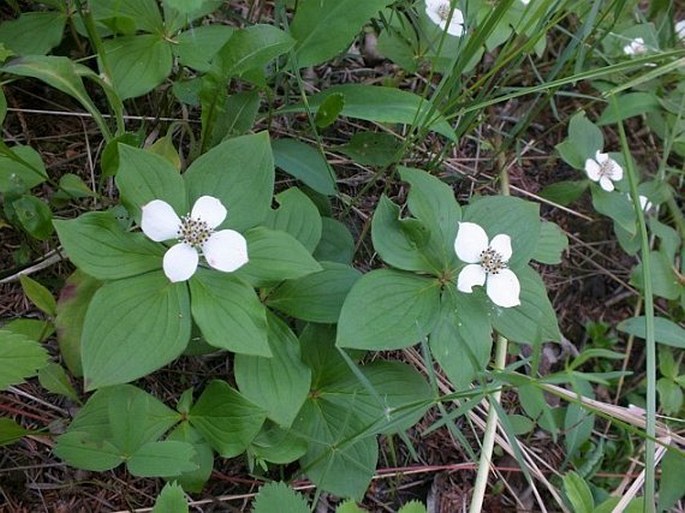
Description: Perennial herb with underground rhizome, 10–25 cm tall. The stem is erect, not branched; leaves are opposite, with stalks, in whorls of 4–6 (4 for sterile, 6 for fertile), elliptical or diamond-shaped, 3.5–4.8 × 1.5–2.5 cm, pointy at tip, 2 leaves are larger, 4 leaves smaller. Inflorescence is an open cyme, terminal, 5–15 flowered, 4 conspicuous bracts, 10–25 mm, white. Flowers white, 1–2 mm across, 4 sepals, 4 petals, 4 stamens, 1 pistil. Fruit is berry-like drupe, red, 6–8 mm across, edible but tasteless.
Usage: Berries are used as additive to jams, puddings and pastry.
Note: Within the genus this species is listed under subgenus Arctocrania with 2 other species, which are found in Europe, northeastern Asia, Burma and North America. One of them is Cornus suecica which is contiguous with range of Cornus canadensis.
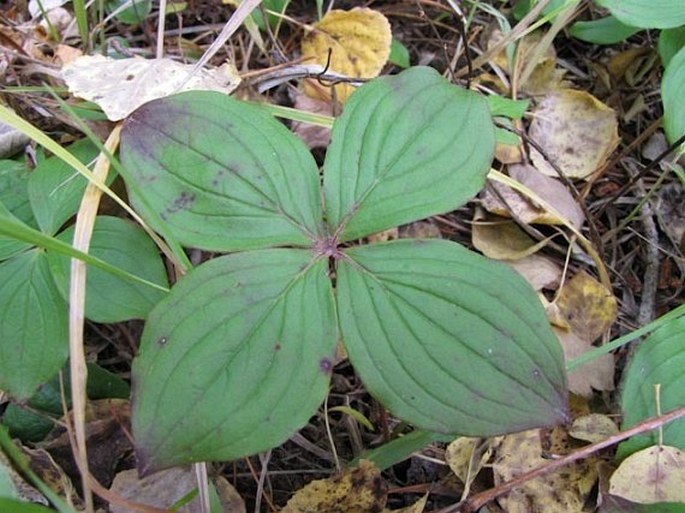
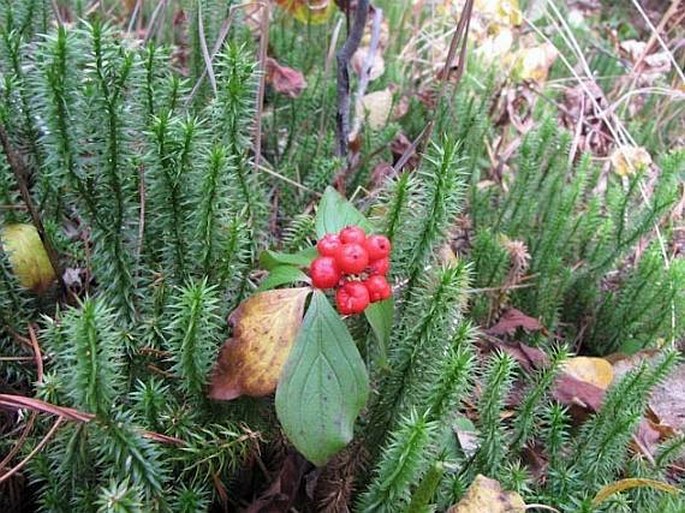
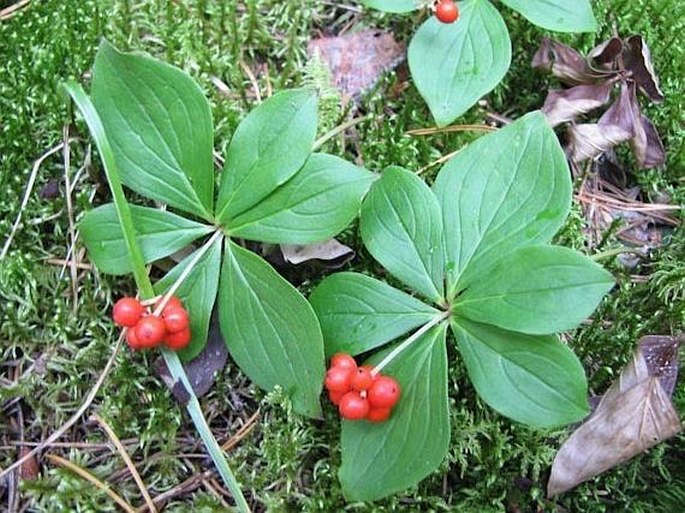
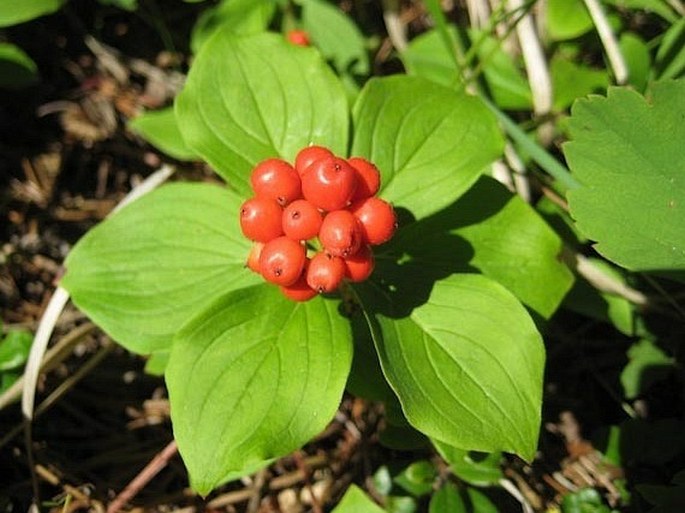
These images were taken in Canada, Alberta, Bragg Creek (2010–12).


